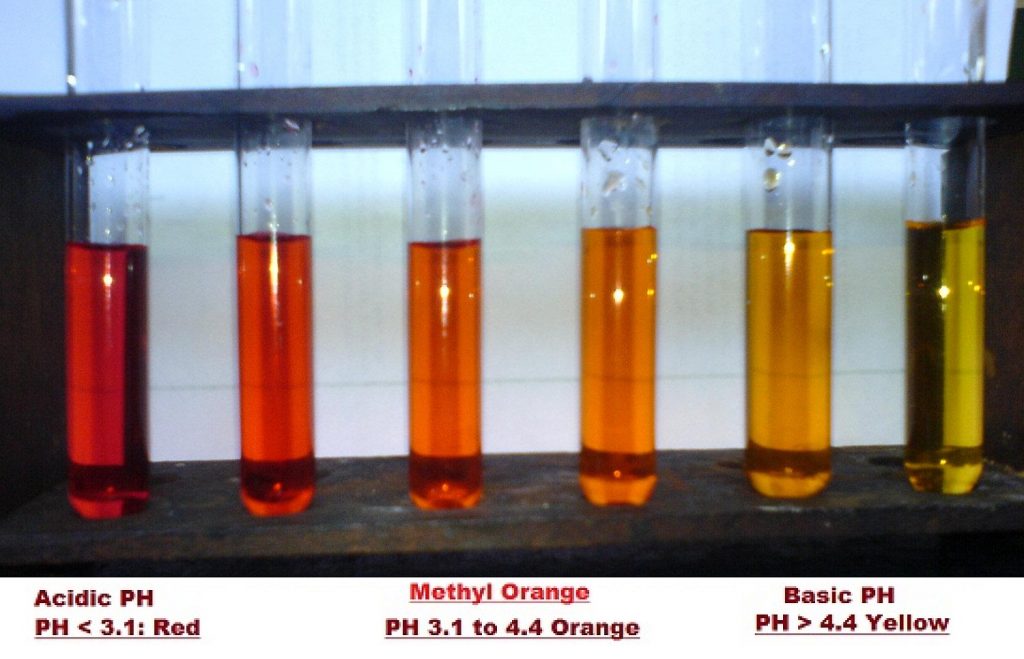Table of Contents
Activity 2.1 NCERT Class 10 Science, Chapter 2 Acids, Bases, and Salts.
Procedure:
Activity 2.1 asks us to test various acids and bases with various reagents one by one and see the result.
Explanation:
Various reagents mentioned here are PH indicators. We find its use them in chemistry practicals.
Blue Litmus Paper: It is a reagent to test for basic PH. In acidic PH it turns red.
Red litmus paper: It turns blue in basic PH.
Phenolphthalein: (Pronunciation: L Silent) It is a colourless reagent. It turns pink in basic PH.
Methyl Orange: It is a narrow range PH indicator. At PH below 3.1 it is red and PH above 4.4 it is Yellow.

Observation:
Stronger acids like Hydrochloric acid, Sulphuric acid, Nitric acid have very acidic PH. So, it turns blue litmus into red and gives a red solution with methyl orange.
Similarly, Stronger bases like sodium hydroxide, calcium hydroxide, potassium hydroxide, magnesium hydroxide, and ammonium hydroxide turn the red litmus into the blue. With phenolphthalein, they give a pink solution and with methyl orange they give a yellow solution.
For weak acid and bases:
The PH of weak acids and bases depends on their concentration.
For example
Acetic acid: The 1M solution has a PH of 2.88. So It turns Blue litmus Red. Phenolphthalein indicates only basic PH so there is no change in the colour with phenolphthalein. It turns methyl orange into the red.
Inference/conclusion:
Different PH indicators give different colour with the acids and bases. An acid turns the blue litmus paper red while a base reveres this. Bases give red colour with phenolphthalein while with methyl orange it gives a yellow solution. Similarly, acids give red colour with methyl orange.
Application:
We use indicators in an acid-base reaction to finding the endpoint. After completion of a reaction, any addition of a reactant changes the PH of the solution. If a suitable PH indicator is present in the solution, it changes the colour which marks the endpoint.
Some extra point:
Salt of a strong acid and strong bases like sodium chloride have PH near 7.
Salt of Strong acid and a weak base, e.g. copper Sulphate (CuSO4) have acidic PH.
Similarly Salt of a Strong base and weak acid, e.g. Calcium carbonate (CaC03) have basic PH.
Next: Change in smell and color of onion and vanilla with acid and bases. Activity 2.2.
See also:
Other activities from NCERT class 10 science Chapter 2.
Solved in-text questions: Acids, bases and Salts.
Reference: NCERT textbook for class 10 Science.
Great it is
Awesome
Amazing
Cool dude
… ‘
yes it’s really nice
Nice man
Op bolte
Good bro
nice… buddy thanks
#_#